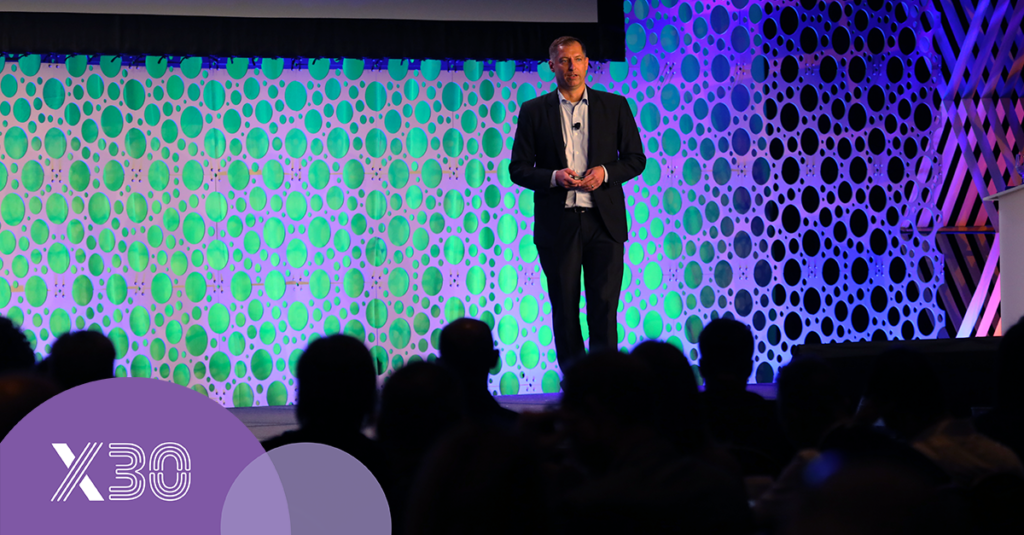ESG Reporting and EHS Management at Day 2 of the Intelex User Conference
December 8, 2022

Day Two of the Intelex User Conference in Nashville on Nov. 4 continued the discussions about the current state of EHS management, the growing role of ESG reporting and how best to support the frontline worker.
With experts from various industries in every breakout session, the discussions were rich with insights into how Intelex and its partners can continue to foster the innovation customers need to keep workers safe on the job and create a sustainable future for everyone.
Managing an OSHA Inspection
When an incident happens in the workplace, an OSHA inspection frequently follows. 60 percent of inspections take place in construction, manufacturing, retail and health care, while almost 40 percent of all OSHA inspections are at organizations with fewer than nine employees.
While your organization and OSHA both have the goal of keeping workers safe and ensuring the continuous improvement of the safety management system, it’s important to know how to manage the OSHA inspection and what you need to do to facilitate the process for everyone involved. Travis Vance, a specialist in workplace health and safety and a partner in the Charlotte, North Carolina office of Fisher Phillips, led Are You Ready? What to Expect When OSHA Shows Up at Your Door, an interactive workshop in which attendees engaged in a number of scenarios related to OSHA inspections and EHS management. Travis used his deep expertise on OSHA inspections to bust some myths, provide some best practices and help safety managers learn how to prepare and manage the inspection process, covering such themes as:
- What should you do and not do during an inspection and interview?
- When should you call OSHA?
- When should council lead an incident investigation?
- How can you prevent OSHA from expanding the scope of the investigation?
- Where can OSHA go in your facility during an inspection?
- How long should it take for OSHA to begin and end an inspection?
- What are the best practices for interviews and statements?
- What documentation is OSHA entitled to ask for?
For safety practitioners, both those who have been through OSHA inspections and those who have yet to do so, Travis’ expertise helped to provide a solid foundation to ensuring the OSHA inspection facilitates the best outcome for everyone.
ESG Challenges and Opportunities
Environmental, social and governance (ESG) metrics have become a leading concern for many organizations over the last few years. Having evolved out of the well-intentioned, but vague, corporate social responsibility (CSR) initiatives of years past, ESG is a data-driven approach to showing investors, customers and markets that an organization is a responsible partner in creating a sustainable future and a more equitable world.
While this is a positive development, it is not necessarily an easy one for organizations to manage. ESG requires education, resources and a lot of data, and although some organizations have already made considerable progress with ESG reporting, others are still looking for how to get started.
Understanding ESG was the theme of the panel discussion Having the Right Ecosystem for a Stronger ESG Proposition featuring Trevor Bronson (Director, Portfolio Strategy at Intelex), Tate Moeller (Senior Product Marketing Manager at Datamaran) and Jessica Pransky (Principal Analyst at Verdantix). The session began by examining a simple question: what is ESG and how is it different from EHS? While the ubiquity of ESG in the media and in corporate strategy plans might suggest this is an unnecessary question, the complexity of the concept makes it difficult to pin down and even more difficult to implement. With both ESG and EHS sharing an “environmental” element, it’s easy to be confused about where one begins and the other ends. ESG reporting can also take advantage of much of the environmental data that EHS managers already collect, making the distinction between them even more vague.
However, there are significant differences as well. ESG is a framework that relates not only to sustainability but also to social and governance issues, and while there is a huge amount of data to support the environmental element, the social and governance elements of ESG are broader and more qualitative. ESG efforts are also highly connective across the organization and require participation from several teams, including finance, risk, legal, supply chain, procurement and leadership. Collecting data from all these areas can be a significant challenge, particularly in organizations where those areas operate in silos.
There is no single approach to managing ESG. Every organization has different resources, different requirements and a different impact on the community in which it operates. Leaders need to conduct a materiality assessment—measuring the impact and importance of external issues on the goals of the organization—to better understand the best way to approach ESG. This assessment should also examine the concept of double materiality, which extends the traditional concept of materiality to incorporate the reciprocal impact of the organization on the community.
A materiality assessment will be different for every organization, but it is a critical component of managing ESG reporting efforts. It will also be a dynamic assessment, which means it needs to change over time. Given the geopolitical volatility of the world today, those changes could be significant. The panel gave the example of Russia’s invasion of Ukraine as an event that had a significant impact on materiality assessments done prior to the invasion. A materiality assessment should therefore be an ongoing process that incorporates the changing global landscape.
Technology is a crucial component of ESG reporting. For the sheer quantity of data alone, organizations need to move beyond manual processes and spreadsheets in favor of cloud-based software that can collect data across multiple locations and generate reports for internal leadership and external reporting requirements. Before investing in technology solutions, however, organizations need to set their priorities and understand what they already have, what they need and what their goals are. Technology is vital, but it won’t do much good if the organization hasn’t established goals and processes to meet those goals.
With so much expertise in one place, it would be easy to be overwhelmed by the amount of information that came out of all the discussions. The dominant feelings, however, are those of pride and hope: pride that there are so many dedicated practitioners working each day to keep people safe and create a more sustainable future, and hope that achieving the end of death in the workplace by 2050, providing an equitable society and protecting the planet will be only the first of many revolutionary accomplishments we can all achieve together.





